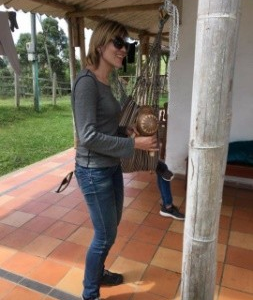The Power Of Active Learning In Corporations
I was attending a business skills academy when I walked into a room. In there, two employees from a large accounting company were preparing what I was thinking was just another presentation. But as soon as they started, I knew that it was going to be something way different. The two employees put us into groups of five people and gave us an assignment: build a model of the Bosphorus Bridge. Why would an accounting company give us a construction project? I soon found out the genius behind it, and it had to do with something called the "Learning Pyramid."
Why Do We Forget (Almost) Everything We Are Taught?
The National Training Laboratory conducted plenty of research projects to find out how people learn, and they discovered the following things:
- People have two modes of learning: passive and active. Passive is a one-way street where people just receive information, while active learning involves input from the participants and it includes back-and-forth communication.
- People have three learning styles: auditory (listening), visual (looking/seeing), and kinesthetic (touching/doing).
Also, the National Training Laboratory found out what methods of learning bring in the biggest results and stick around the most. There are 7 different methods of learning and they bring in different results:
- Lecture
Passive mode, 5% retention of knowledge, auditory style - Reading
Passive mode, 10% retention of knowledge, visual style - Audio-visual (TED talk)
Passive mode, 20% retention of knowledge, audio-visual style - Demonstration
Passive mode, 30% retention of knowledge, audio-visual - Discussion
Active mode, 50% retention of knowledge, audio-visual-kinesthetic - Learn by doing
Active mode, 75% retention of knowledge, audio-visual-kinesthetic - Teach others
Active mode, 90% retention of knowledge, audio-visual-kinesthetic
The last three learning methods—discussion, learn by doing, and teaching others—bring in the biggest return on investment with knowledge retention rates of over 50%. And this brings us back to the two employees from the accounting company workshop I participated in. The two employees gave us a task to build a model of a bridge, where we had to work together as a team, build a plan and a presentation, create a budget, and buy equipment from them with special points (scissors, paper, cardboard boxes, etc.) so that we could build a bridge and win the competition.
But the bridge here isn’t important. The real lessons learned are hidden behind the scenes.
Why Active Learning Beats Passive Learning
It wasn’t about the bridge, but about figuring out how to work with my group, how to communicate and delegate effectively, how to pick a leader of the group, how to decide what to do, what to buy, and how to build something together that actually works. Concepts like open communication, delegating, decision-making, conflict resolution, stress, and crisis management are being implemented on the spot.
The best way to teach your employees about decision-making is to put them in a situation where they need to decide. And the workshop I attended is just one example of a company that learned early on that the best way to teach a concept is for people to experience it firsthand. I’ve attended over ninety conferences in my life, but I can’t even name half of them. However, I remember building a bridge ten years ago with four other people and getting second place in the workshop (so close to first place!).
One of the employees was the head of HR of the national division, and she told me that these workshops where people work together are the smartest thing she ever implemented in her national division, internally and externally. Internally, they implement and experience hard-to-grasp concepts like open communication, decision-making, and conflict resolution and build a better and bigger skillset of their employees, which has a massive return on investment.
Externally, they implement it at different conferences, academies, and even during recruitment processes. All of this builds their reputation and brand as a modern and up-to-date company that teaches people through interactive methods of learning (and they are fun). So, the question isn't if these workshops work—they do; the question is: How to implement them in your working environment?
With that in mind, here are 2 ways you can start implementing active learning inside your corporate environment:
1. Learn By Doing
The first way is to learn by doing, and the best example here is Toastmasters. If you want to learn public speaking, this is the place to go. And how do you learn public speaking?
With your application to Toastmasters, you get a small PDF document called “Competent Communication” and your first assignment is “The Ice Breaker.” You stand up and talk to people about who you are and why you applied. And the best thing is that you do this on day one. There are no presentations before or long seminars that you need to attend. You learn public speaking by doing public speaking, starting right now. And they aren’t the only example.
Pixar has required training that you need to go through and some optional classes for different skillsets—all of them are the “learn by doing” style. If the Bosphorus Bridge taught me anything, it was that Einstein’s quote rings true: “Theory and practice are the same in theory, but not in practice.” When implementing learn-by-doing methods in your working environment, you need to make sure that the participants have an active role in the process. It doesn't have to be a workshop; you can give a good book to employees to read and then ask for a summary or an essay on it.
2. Teach Others
B.F. Skinner, one of the most famous psychologists of the 20th century, said, "Education is what survives when what has been learned has been forgotten." Teaching others doesn’t mean that you always need to bring someone external to the company to do training. You can have another employee teach others the skills they learned either on their job or in their free time.
Mindvalley [1], an education company based in Malaysia, gives its employees space to teach others the skills they have learned. Google does the same with its Googler-to-Googler program [2]. And the way to do that involves a 4-step process known as "The Feynman Technique":
- Choose a concept you want to learn about.
- Pretend you are teaching it to a student who is in sixth grade.
- Identify gaps in your explanation; go back to the source material to better understand it.
- Review, simplify, and add stories.
By taking this technique into account, not only are you developing employees by having them apply the knowledge, but you’re also showing the next generation of people what they can do in the company. And the best way to learn something is to teach it.
Are You Getting The Best Out Of Your Learning System?
Active learning is difficult and time-consuming, especially when transitioning from a passive style of learning. It takes time to research, create, test, and verify that the process will be successful and that everyone in the program/workshop/meeting will get the most out of it. Even if you prepare everything, you don’t know if it works or not because it’s hard to measure the engagement of participants. The active learning instances don't have to be workshops; you can have a book club with your employees and dedicate one day per month for everyone to present a small essay on the book they read.
References:
[1] How To Attract (And Encourage) Brilliance In Your Workplace









